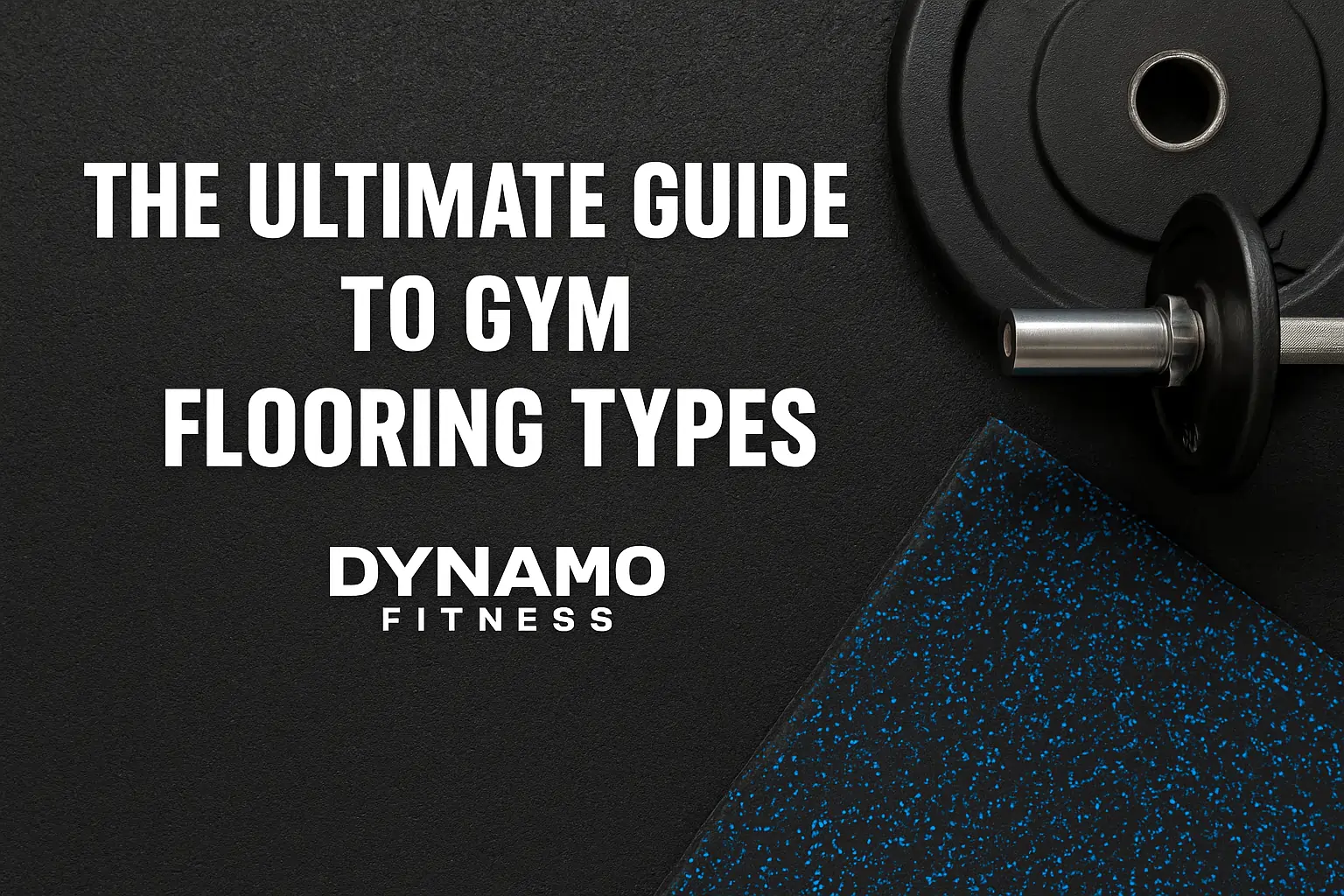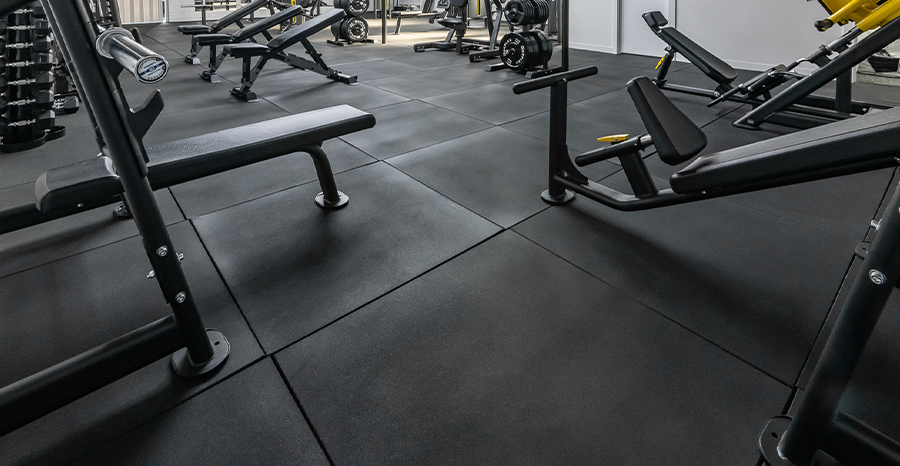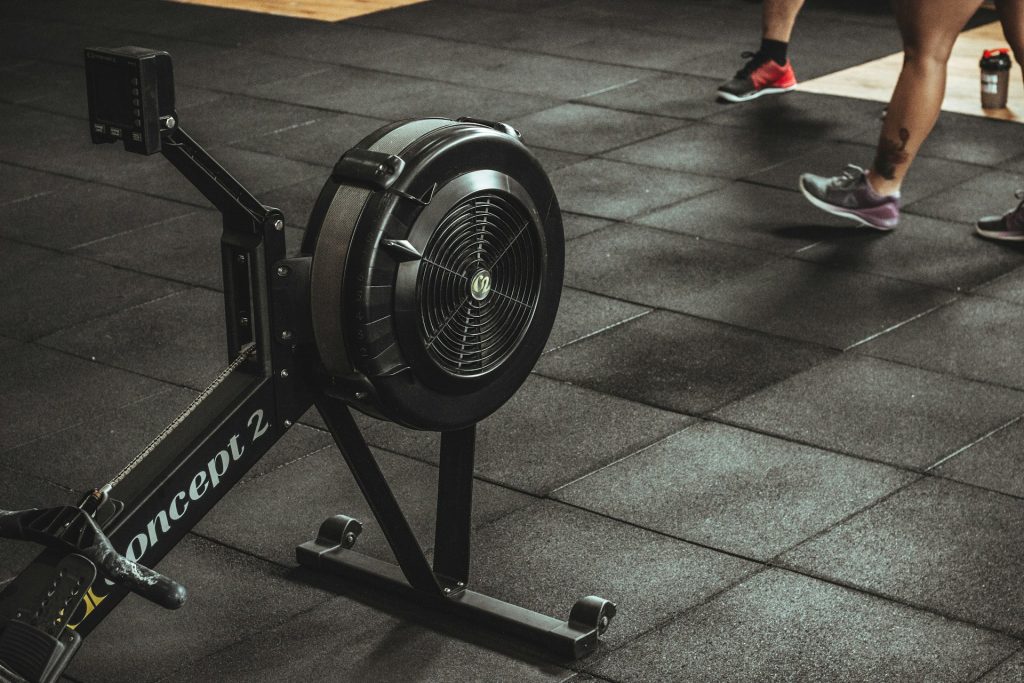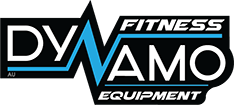
A Guide to Gym Flooring Types for Home & Pro Gyms
Wiping away chalk dust, adjusting slippery mats, or hearing loud thuds during workouts can turn even the best training sessions into a frustrating experience. These problems often point back to poor gym flooring choices.
Different gym flooring types play a major role in safety, durability, comfort, and long-term cost efficiency. A poor surface can lead to frequent injuries, louder environments, and faster equipment wear. On the other hand, the right material can absorb shock, reduce noise, and improve every user’s experience.
In fact, studies show that gym floors with higher shock absorption reduce joint stress and equipment damage over time, while also improving acoustic performance.
This guide covers the most common gym flooring types used in Australia, which are rubber, EVA foam, synthetic turf, luxury vinyl tiles, and sprung wood. You will find detailed comparisons, expert tips, and real-world cost breakdowns.
What Is Gym Flooring?
Gym flooring refers to the surface material used across workout zones, weight areas, studios, and training spaces. More than a base layer, the right gym flooring type provides crucial support for equipment, user performance, and injury prevention.
In high-impact environments, every movement transfers energy downward. Without proper flooring, that force returns through the joints, increasing the risk of injury. Durable surfaces with high shock absorption protect users and reduce fatigue during intense sessions. Equally important, the right floor shields gym equipment and reduces maintenance costs.
Slip resistance also plays a major role. A stable floor enhances balance during heavy lifts or fast-paced drills. Noise reduction matters too. In busy gyms or home environments, a floor that absorbs sound allows workouts without disturbing others.
At-a-Glance Comparison of Gym Flooring Types
The table below summarizes the most common gym flooring types used in home gyms, studios, and commercial facilities across Australia. Each option brings different strengths depending on the activity level, space size, and design goals.
| Flooring Type | Shock Absorption (%) | Noise Dampening | Durability (Years) | Approx. Cost (AUD/m²) | Best For |
|---|---|---|---|---|---|
| Rubber Tiles or Rolls | High (25–40%) | Excellent | 8 to 15+ with care | $50 to $150 | Weight zones, functional areas |
| EVA Foam Interlocking | Moderate (15–25%) | Low to Medium | 3 to 5 | $20 to $50 | Yoga, stretch, recovery spaces |
| Synthetic Turf | Moderate | Moderate | 5 to 10 | $40 to $100 | Agility work, sled drills, CrossFit |
| Luxury Vinyl Tiles (LVT) | Low | Low | 5 to 10 | $60 to $130 | Reception areas, cardio zones |
| Sprung or Engineered Wood | Moderate | Moderate | 10 to 20 | $90 to $200 | Dance studios, functional movement |
More Details on Each Type of Gym Flooring
1. Rubber Gym Flooring (Tiles and Rolls)
Rubber gym flooring offers excellent shock absorption, secure grip underfoot, long-term durability, and reliable noise reduction. Whether building a home gym or fitting out a commercial facility, rubber stands out as the most versatile and protective surface.
Rubber tiles reduce barbell bounce and absorb impact during heavy lifts. In high-traffic zones or weight drop areas, rubber flooring helps protect your equipment and your floors.
Rubber tiles, when manufactured properly, can be a super-strong high-density solution. This makes them a preferred option in most functional spaces.

The Reeplex 100 pack rubber gym flooring stands out for its performance. Each 1×1 meter tile weighs around 13.5 kg, includes anti-slip texturing, contains no chemical additives, and features bevelled edges that improve safety and alignment.
You can place rubber tiles in free-weight sections, functional training zones, or any home gym setup that includes powerlifting or Olympic movements. For best results, choose a thickness between 10 and 30 millimeters. Thicker tiles offer better protection during heavy lifts, while thinner ones help reduce material costs.
Routine care requires vacuuming debris and wiping the surface with a pH-neutral cleaner. Periodically check the seams to ensure tight connections between tiles. When installed correctly, high-density rubber flooring stays in place and delivers strong support across years of training.
2. EVA Foam Tiles and Mats
EVA foam flooring works well for low-impact areas where comfort and flexibility take priority. These mats feel soft underfoot and help reduce joint strain during stretches or mobility sessions. Eva foam mats are lightweight and comfortable, while rubber mats are heavy-duty and long-lasting.

Foam tiles snap together easily, making them ideal for spaces that need quick setup or seasonal changes. You can move them around or store them without much effort. This makes foam flooring popular for home yoga rooms, Pilates studios, stretching spaces, and kids’ activity zones.
Despite its comfort, EVA foam does not handle heavy loads well. Dropping barbells can tear the surface or compress the structure, especially in thinner tiles. Foam can also absorb moisture over time if left unsealed. To reduce risks, select closed-cell EVA rather than open-cell polyethylene. Closed-cell construction blocks moisture, controls odors, and resists mold more effectively.
Foam tiles typically range from 6 to 25 millimeters thick. Thicker tiles improve softness but lose firmness for balance. If balance or footing is critical, stay closer to the 10 to 15 millimeter range.
For low-intensity use, EVA foam provides comfort and flexibility at a lower cost than other flooring types. However, Eva foam works best in zones where weight drops and high loads never occur.
3. Synthetic Turf
Synthetic turf adds versatility and traction to functional fitness zones. You often see this flooring type in performance gyms, CrossFit boxes, and sports training centers where sled pushes, tire flips, and agility drills take place.
Turf delivers moderate shock absorption and supports activities that involve speed, footwork, or directional changes. It cushions knees during kneeling movements and allows athletes to train without slipping. Some facilities add lane markings or colored zones to improve visibility and reinforce brand identity.
Although turf handles bodyweight movements and speed training well, it does not support machines or heavy lifting stations. Friction from moving weights or steel racks can wear through the synthetic fibers or damage the base. For that reason, place turf away from weight machines and barbells.
Choose turf with a strong underlay if comfort and resilience matter in your layout. Custom striping, logos, or borders also help you match the turf with your facility’s style or training goals.
4. Luxury Vinyl Tiles (LVT) and Commercial Vinyl
Luxury vinyl tiles create a professional, polished look for areas that require visual appeal without heavy impact. Use them across reception zones, cardio machine areas, or studio spaces where floor traffic stays light and movement stays controlled.
Vinyl flooring resists moisture and cleans easily with basic solutions. The surface texture also prevents slipping, which makes it safe for older adults or beginners in light-movement programs. While it lacks shock absorption, vinyl remains one of the easiest materials to maintain in a fitness setting.
Vinyl works best in places where aesthetics matter and flooring performance depends on cleanliness, brand appeal, and light-duty use. If comfort or noise reduction becomes a priority, you can place rubber mats or foam padding on top of the vinyl.
5. Sprung Wood and Engineered Timber
Sprung wood or engineered timber flooring suits performance studios that focus on movement, balance, or rhythm. This flooring type creates a responsive base that supports dance, aerobics, martial arts, or cardio sessions with continuous footwork.
Unlike solid wood, engineered timber resists moisture and warping over time. When paired with a sprung underlayer, the floor flexes slightly during impact to reduce stress on knees and joints. This helps dancers, instructors, and athletes train longer with less fatigue.
Sprung timber requires a flat, even subfloor to function correctly. Professional installation ensures stability, level alignment, and acoustic control. Once sealed, the surface resists scuffs and cleans easily with low-maintenance routines.
This type of flooring fits best in studios or spaces that focus on movement quality rather than strength training. With proper care, it delivers both performance and elegance across years of active use.
How to Choose the Right Gym Flooring by Workout Type
Choosing the right gym flooring type depends on how you train and what each space requires. Some areas need maximum impact resistance. Others call for aesthetics, flexibility, or comfort. The list below helps match each goal with the right surface, based on real user needs.
Weightlifting and CrossFit
Use high-density rubber tiles with a thickness of at least 20 millimeters. This setup supports heavy barbell drops, reduces impact shock, and prevents long-term damage to your equipment and subfloor.
Cardio-only or Reception Zones
Select vinyl flooring or low-profile rubber tiles. These areas see light foot traffic and benefit more from clean lines, moisture resistance, and modern aesthetics.
Yoga, Mobility, and Recovery Spaces
Install EVA foam tiles for soft support and grip. Foam flooring costs less and supports bodyweight movements while reducing pressure on joints and hips.
Functional Training, Sled Work, and Agility Lanes
Turf flooring works best here. Add a shock-absorbing layer underneath for extra joint protection and smoother movement across drills.
Full Fit-outs or Visual Branding Focus
Combine different materials across zones. Use rubber in free-weight sections, turf in speed areas, and luxury vinyl in lounge or studio spaces. This mix supports performance while enhancing visual design.
Gym Flooring Installation and Maintenance Guide
Installing gym flooring requires preparation and precision. Follow the steps below to create a safe, long-lasting foundation.
Before Installation
- Check the subfloor for level alignment
- Run a moisture test to prevent future swelling or mold
- Leave expansion gaps along edges for material flexibility
Tools You Will Need to Install Gym Flooring
- Flooring cutter for precise edges
- Floor roller to press seams together
- Safety mats or alignment tools to keep tiles straight
Tip: Snap-together rubber tiles reduce setup time and do not require adhesive. Foam tiles interlock easily and work well on surfaces that do not feel completely level.
Ongoing Maintenance Plan
- Vacuum each week to remove chalk and dust
- Inspect seams and tile movement once per month
- Deep-clean with a pH-neutral solution every quarter
When to Replace Gym Flooring
- Surface feels flat with no bounce
- Visible cracks or compressed spots appear
- Tiles separate or create tripping risks
Routine care extends the lifespan of every flooring type, especially rubber and foam. Keep a simple checklist to make sure your floor remains safe and consistent.
Conclusion
Each gym flooring type supports a different need. Rubber tiles work best in weight zones and functional spaces. EVA foam offers soft support in recovery areas. Turf fits agility and sled lanes. Vinyl works well in reception zones or light-use studios. Wood flooring adds style and resilience to movement-focused spaces.
For full gym fit-outs, combine surfaces to match the training purpose of each zone. This strategy improves safety, visual flow, and equipment performance. Dynamo’s Reeplex rubber tiles also deliver extra value, offering low-smell, anti-slip performance with chemical-free materials and beveled edges.
Shop premium gym flooring at Dynamo Fitness. Explore our full range online or visit one of our fitness equipment showrooms across Australia for expert support and guidance from our knowledgeable team.
Stay ahead with expert guidance and durable flooring solutions that grow with your training space.
[sp_easyaccordion id=”5928″]
